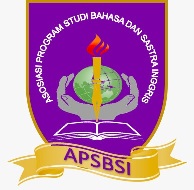THE EFFECTIVENESS OF HERRINGBONE TECHNIQUE TO TEACH READING OF NARRATIVE TEXT
Abstract
This final project is based on the research which attempted to find out the effectiveness of Herringbone technique to teach reading of narrative text. The design of this study was experimental study. There were two groups used in the research; the experimental group and the control group. The two groups were given different treatments. The experimental group was taught by using Herringbone technique while the control group was taught using conventional technique. The population of this study was the eighth grade students of SMP Negeri 24 Semarang in the academic year of 2015/2016. The number of the subjects was 64 students. The data were obtained by administering reading test to the VIII A as control group and VIII B as experimental group. The research was started by giving pre-test, treatments, and post-test to both experimental groups and control groups. The data of the test were analyzed by using t-test formula to know the difference of the students’ comprehension in reading narrative text between two groups. The data analysis in research ,some purpose can be drawn as follow. The first purpose of the study is to discuss the effectiveness of teaching reading using Herringbone technique to improve students’ reading of narrative text. The use of Herringbone technique in teaching reading makes the activity in class more interesting. The students are active and more enthusiastic following the teachers’ instruction and working in group. The second purpose of the study is to analyze the significant difference between teaching reading using Herringbone technique and the one using conventional technique. The difference in score of both test can be drawn as follow. The average score of pre-test of the experimental group was 67.75 and the control group was 65.59. The average score of post-test of the experimental group was 71.31 while the control one was 69.71. The result of the t-test of mean difference was 8.94 and t-table was 2.00. It means that t-value is higher than t-table (8.94>2.00). It can be concluded that there is a significant difference between teaching reading using Herringbone technique and the one using conventional technique. Based on the research conducted, it proved that the use of Herringbone technique is effective as a strategy to improve teaching reading comprehension of narrative text to the eighth year students of SMP Negeri 24 Semarang.References
Arikunto, Suharsimi. 2010. Manajemen Penelitian (Revised Edition). Jakarta: Rineka Cipta.
Best, John.W. 1981. Research in Education (Revised Ed.). New Jersey: Prentice-Hall.
Deegan. J. 2006. Herringbone Technique. Available at http://www.teacherweb.com/PA/NazarethAreaMiddleSchool/TheSpecialistTeam/HerringboneTechnique.doc. [Accessed 2/8/2014]
Edwards, Peter. 2003. Literacy Techniques: For Teachers and Parents (3rd Edition). Victoria: Trafford.
Harris, K. 1980. Reading in Content Areas .Strategies for Reading to Learn. Semantic Maps. University of Virginia.
Heaton, J. B. 1975. English Language Tests. England: Longman.
McKnight, Katherine S. 2010. The Teacher’s Big Book of Graphic Organizers: 100 Reproducible Organizers that Help Kids with Reading, Writing, and the Content Areas. San Francisco: Jossey-Bass.


_.jpg)
_.jpg)




